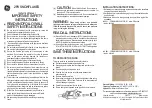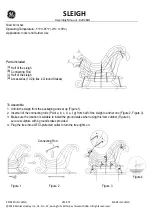
10
Groundwork
locations and in landscape locations where loads may be placed on the fixture by for example
vehicles or pedestrian traffic, an installation sleeve is required (see
9).
Direct burial: examples
The example installations below show how an Inground 200 can be buried directly, but the installer
must make allowance for local conditions:
It is vital to ensure that the base of the housing rests firmly on a strong foundation, so that any
pressure on the top surface of the fixture after installation will not press the fixture into the ground.
One possible way of achieving this is to pack crushed stone or hardcore firmly in the bottom of the
installation well to support the housing.
Ensure that cables are not stressed or crushed during installation, and ensure that the housing rests
on its base, and not on the cables.
Tip!
When creating a strong foundation for the Inground 200, remember to allow for
drainage.
Cable installation
Important! The installer must make sure that all national safety regulations and legal
requirements are followed when selecting and installing cables, conduit, warning
tape, controllers and all related items for the Inground 200.
Cable slack
Allow at least 80cm (2ft 8in) of free cable in the installation well or sleeve so that the fixture can be
lifted clear for service without disconnecting cables.
Minimum 80cm cable slack
Summary of Contents for Inground 200
Page 1: ...mar tinar chi te ctural Installation Guide Inground 200...
Page 4: ......






































